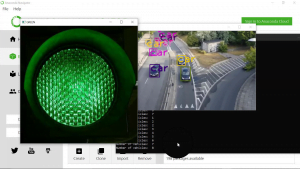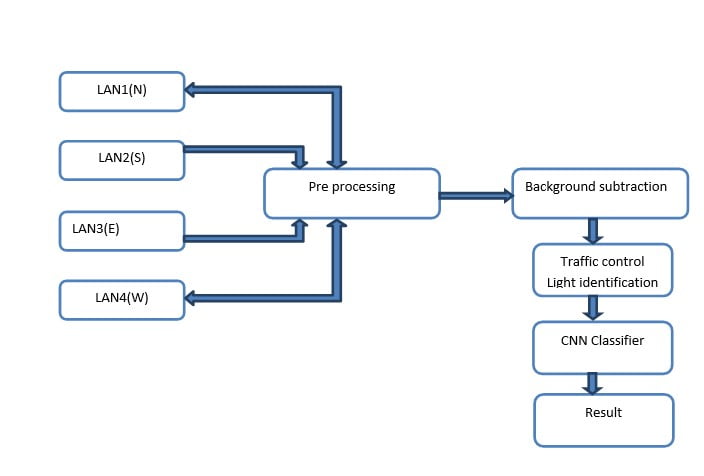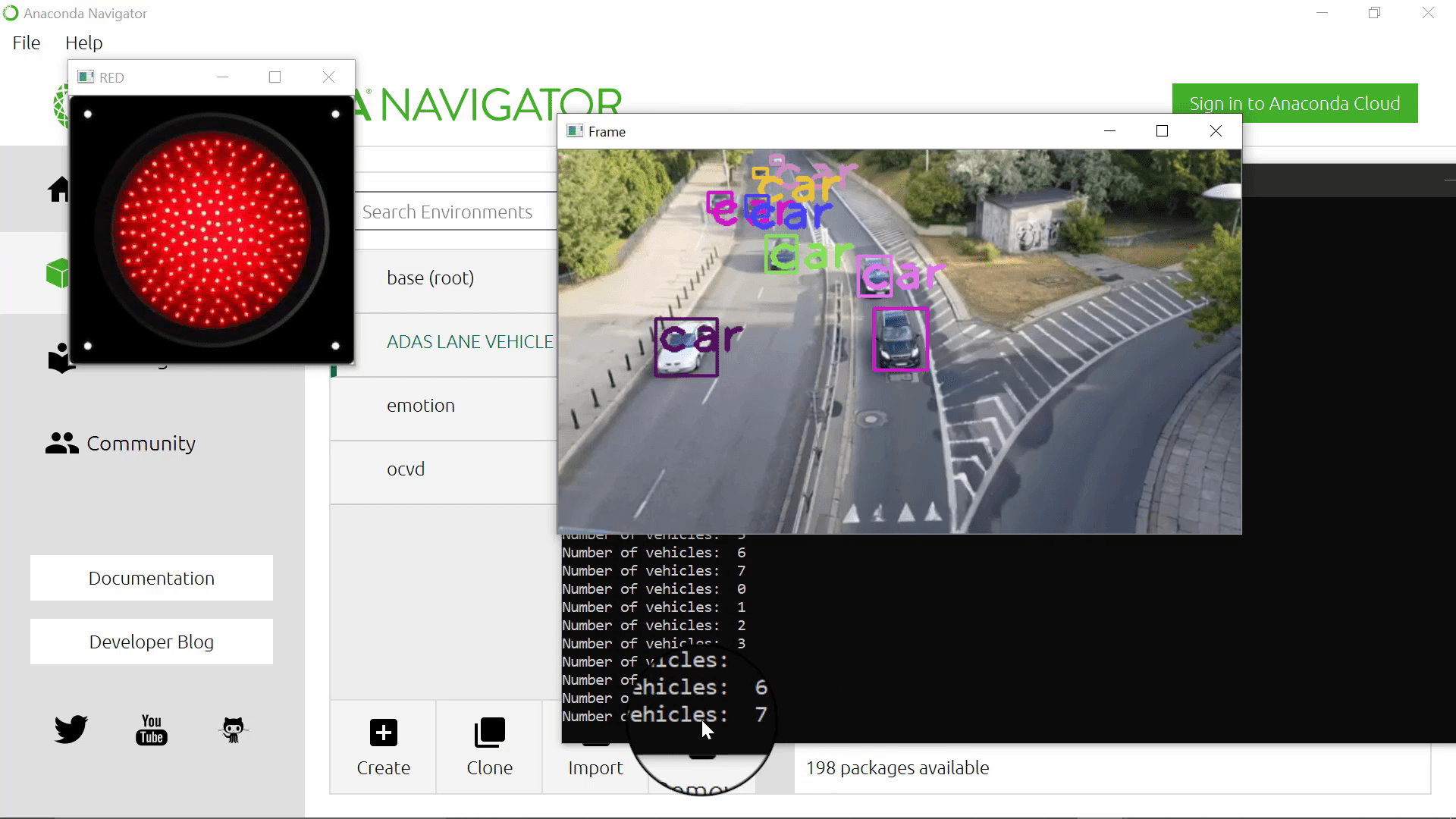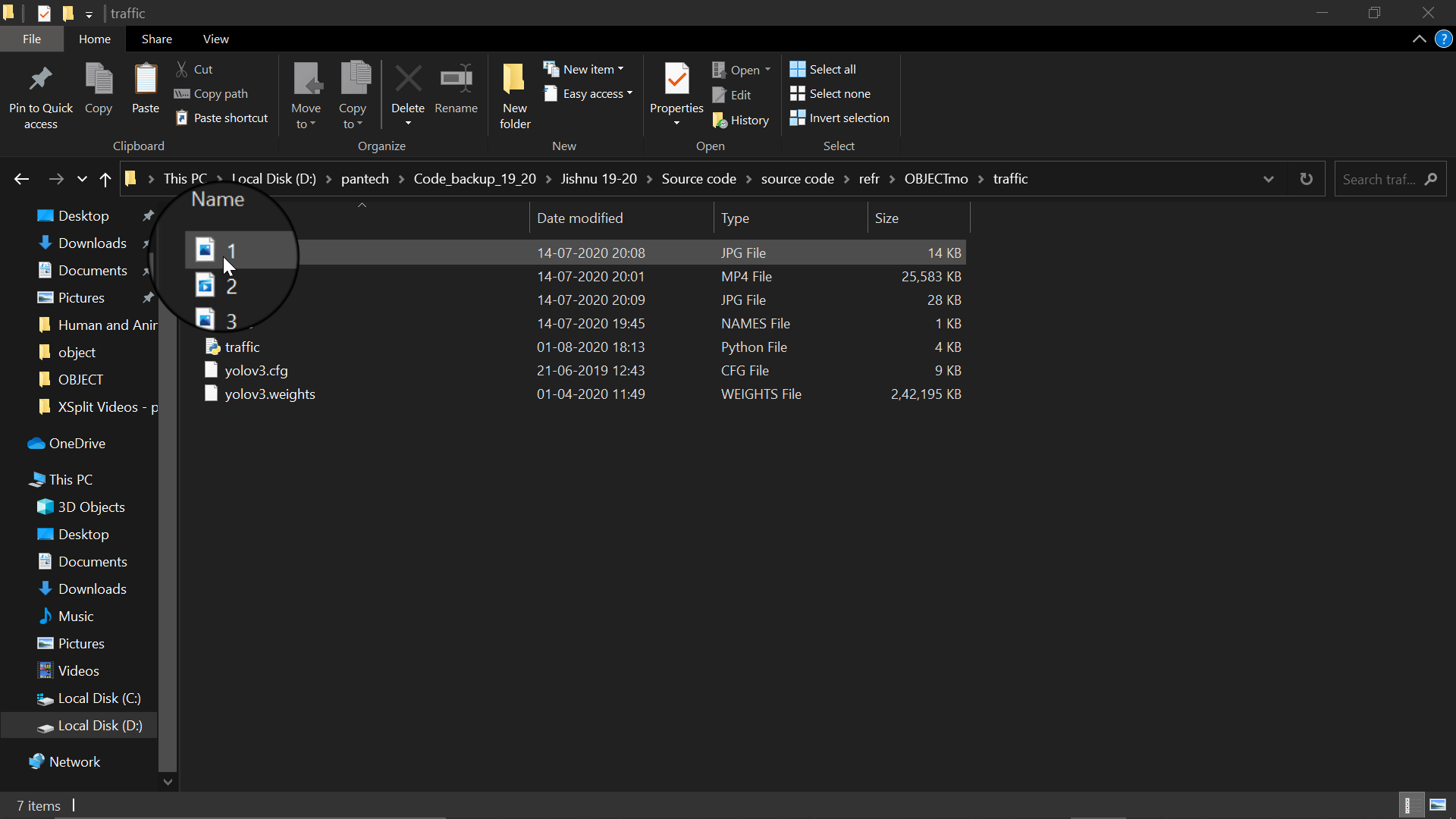Description
Traffic Light Monitoring and Control using CNN with OpenCV
Traffic signals are essential to guarantee safe driving at road intersections. However, they disturb and reduce the traffic fluency due to the queue delay at each traffic flow. In this work, we introduce an Intelligent Traffic Light Controlling (ITLC) algorithm. This algorithm considers the real-time traffic characteristics of each traffic flow that intends to cross the road intersection of interest, whilst scheduling the time phases of each traffic light. The introduced algorithm aims at increasing traffic fluency by decreasing the waiting time of traveling vehicles at signalized road intersections. Moreover, it aims to increase the number of vehicles crossing the road intersection per second.
Traffic Light Monitoring and Control using CNN with OpenCV
INTRODUCTION:
In modern life, we have to face many problems one of which is traffic congestion becoming more serious day after day. Traffic flow determination can play a principal role in gathering information about them. This data is used to establish censorious flow time periods such as the effect of a large vehicle, specific part on vehicular traffic flow, and to provide a factual record of traffic volume trends. This recorded information is also useful for processing better traffic in terms of the periodic time of traffic lights. There are many routes to count the number of vehicles passed at a particular time and can give judgment of traffic flow. Now a day’s camera-based systems are better choices for tracing vehicles data. This project focuses on a firmware-based novel technique for vehicle detection. This approach detects the vehicles in the source image and applies an existing identifier for each vehicle. Later it classifies each vehicle on its vehicle-type group and counts them all individually. The developed approach was implemented in a firmware platform which results in better accuracy, high reliability, and fewer errors. Traffic lights play a very significant role in traffic control and regulation on a daily basis. Using python the density of the roads is determined and the microcontroller changes the duration of green light given for each road as per the output after image processing

Existing Systems
The traffic lights used in India are basically pre-timed wherein the time of each lane to have a green signal is fixed. In a four-lane traffic signal, one lane is given a green signal at a time. Thus, the traffic light allows the vehicles of all lanes to pass in a sequence. So, the traffic can advance in either a straight direction or turn by 90 degrees as shown in Fig.1. So even if the traffic density in a particular lane is the least, it has to wait unnecessarily for a long time and when it gets the green signal it unnecessarily makes other lanes wait for even longer durations. Traffic Light Monitoring and Control using CNN with OpenCV
Disadvantages:
- Time-consuming
- Delay
- Less accuracy
Proposed system:
In this system, we are going to implement crowd-based traffic control? a light system using CNN, the lane will get open on the basis of the crowd at the desired lane. It is identified by capturing the vehicle crowd images in the lane and identifying the number of vehicles with red color in that desired lane.
Advantages:
- High accuracy
- Fast process
- High intelligent technique
System Design
Block Diagram

Image Pre-processing? is a common name for operations with?images?at the lowest level of abstraction. Its input and output are intensity? images. The aim of?pre-processing?is an improvement on the? image? or data that suppresses unwanted distortions or enhances some images? features important for further processing.
Image restoration is the operation of taking a corrupted/noisy image and estimating the clean original image. Corruption may come in many forms such as motion blur, noise, and camera misfocus.? Image restoration is different from image enhancement in that the latter is designed to emphasize features of the image that make the image more pleasing to the observer, but not necessarily to produce realistic data from a scientific point of view. Image enhancement techniques (like contrast stretching or de-blurring by a nearest-neighbor procedure) provided by “Imaging packages” use no a priori model of the process that created the image.? With images, enhancement noise can effectively be removed by sacrificing some resolution, but this is not acceptable in many applications. In a Fluorescence Microscope resolution in the z-direction is as bad as it is. More advanced image processing techniques must be applied to recover the object.? De-Convolution is an example of an image restoration method. It is capable of Increasing resolution, especially in the axial direction removing noise and increasing contrast.Traffic Light Monitoring and Control using CNN with OpenCV
Traffic Light Monitoring and Control using CNN with OpenCV
BACKGROUND SUBTRACTION:
Background subtraction, also known as? foreground detection, is a technique in the fields of? image-processing?and?computer vision? wherein an image’s foreground is extracted for further processing (object recognition etc.). Background subtraction is a widely used approach for detecting moving objects in videos from static cameras. The rationale in the approach is that of detecting the moving objects from the difference between the current frame and a reference frame, often called “background image”, or “background model”. Background subtraction is mostly done if the image in question is a part of a video stream. Background subtraction provides important cues for numerous applications in computer vision, for example, surveillance tracking or human poses estimation.
Hardware Requirements
- system
- 4 GB of RAM
- 500 GB of Hard disk
Software Used:
- Python
- Open-CV?
Traffic Light Monitoring and Control using CNN with OpenCV
REFERENCE:
- R. Babaei, O. Molalapata and A. A. Pandor Face Recognition Application for Automatic Teller Machines (ATM), in ICIKM, 3rd ed. vol.45, pp.211-216, 2012.
- Aru, O. Eze, and I. Gozie, Facial Verification Technology for Use in ATM Transactions, in American Journal of Engineering Research (AJER), [Online] 2013, pp. 188-193, Available:http://www.ajer.org/papers/v2 (5)/Y02501880193.pdf? K.?
- Peter, G. Nagarajan, G. G. S. Glory, V. V. S. Devi, S. Arguman and K. S. Kannan, Improving ATM Security via Face Recognition, in ICECT, Kanyakumari, 2011, vol.6, pp.373-376.
- Derman, Y. K. Gec? ici and A. A. Salah, Short Term Face Recognition for Automatic Teller Machine (ATM) Users, in ICECCO 2013, Istanbul, Turkey, pp.111-114?
- Ross and A. Jain, Information Fusion in Biometrics, In Pattern Recognition Letters, vol.24, pp.2115-2125,2003.
- Ibrahim Nahhas, Ing. Filip Orsag, Ph.D ?Real-Time Human Detection And Tracking?, Bruno University of Technology.?
- Vikramaditya Dangi, Amol Parab, “Image Processing Based Intelligent Traffic Controller”, Undergraduate Academic Research Journal (UARJ), ISSN: 2278? 1129, Volume-1, Issue-1, 2012.
- Raoul de Charette and Fawzi Nashashibi, ?Traffic light recognition using Image processing Compared to Learning Processes?.
- Mriganka Panjwani, Nikhil Tyagi, Ms. D. Shalini, Prof. K Venkata Lakshmi Narayana, ?Smart Traffic Control Using Image Processing?.
- Shiu Kumar”UBIQUITOUS SMART HOME SYSTEM USING ANDROID APPLICATION” International Journal of Computer Networks & Communications (IJCNC) Vol.6, No.1, January 20143







































































































































































































































































































































































































































































































































































































































































































































































































































































































































































































































































Customer Reviews
There are no reviews yet.